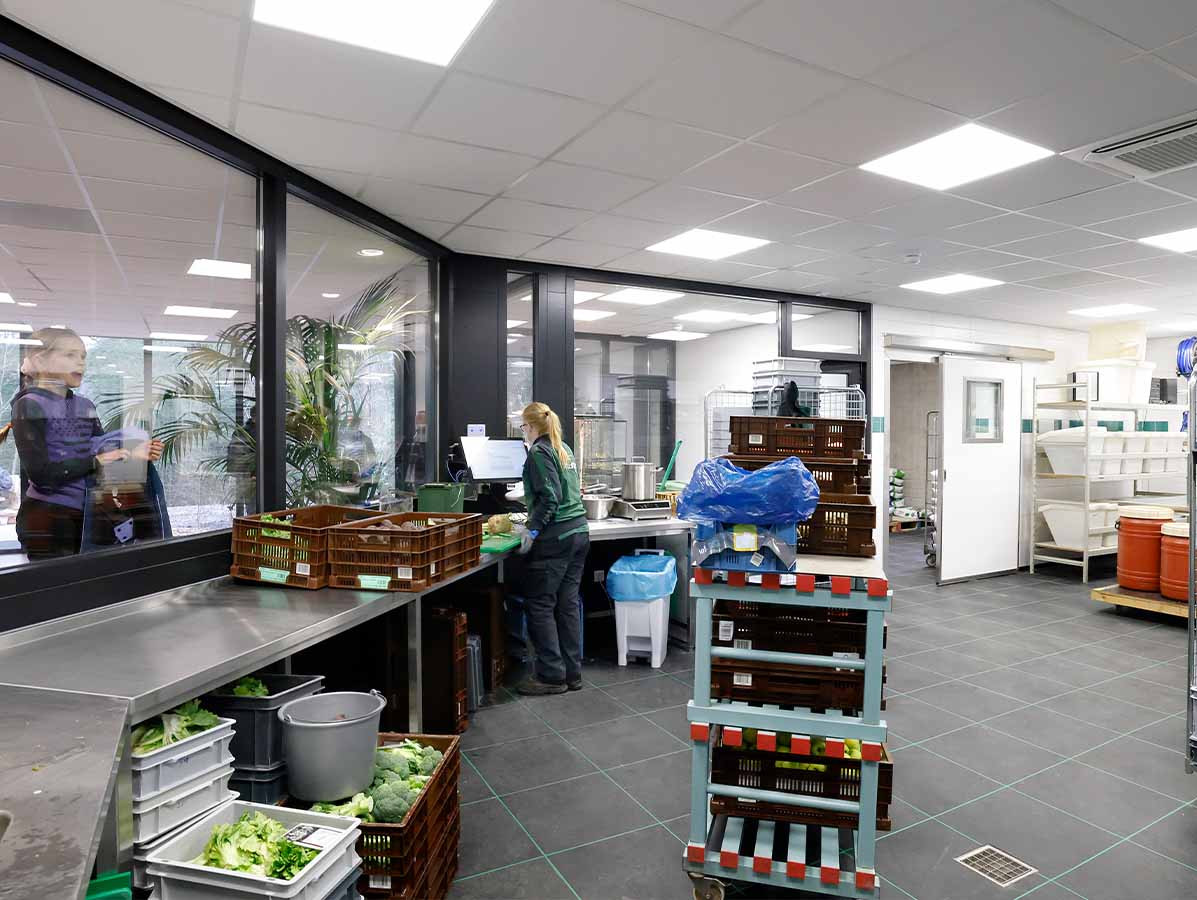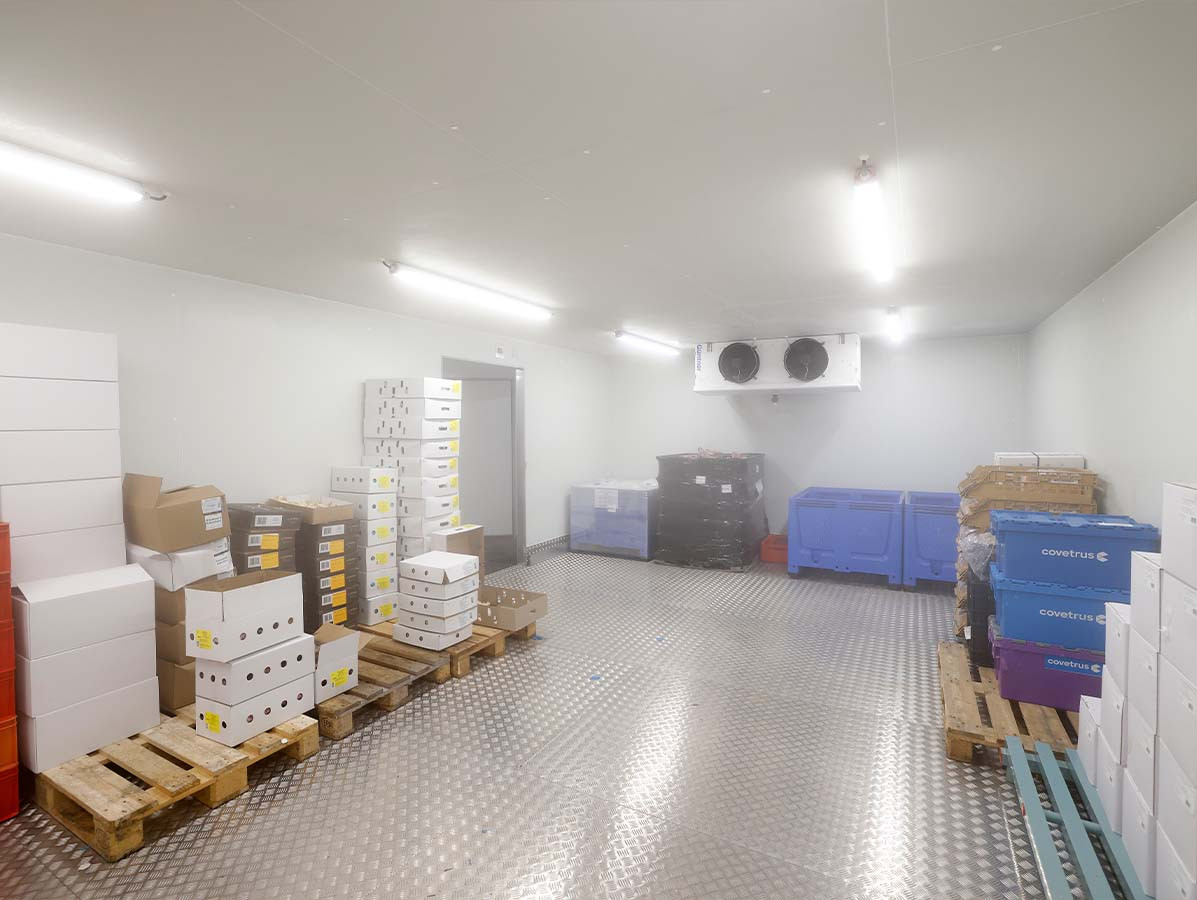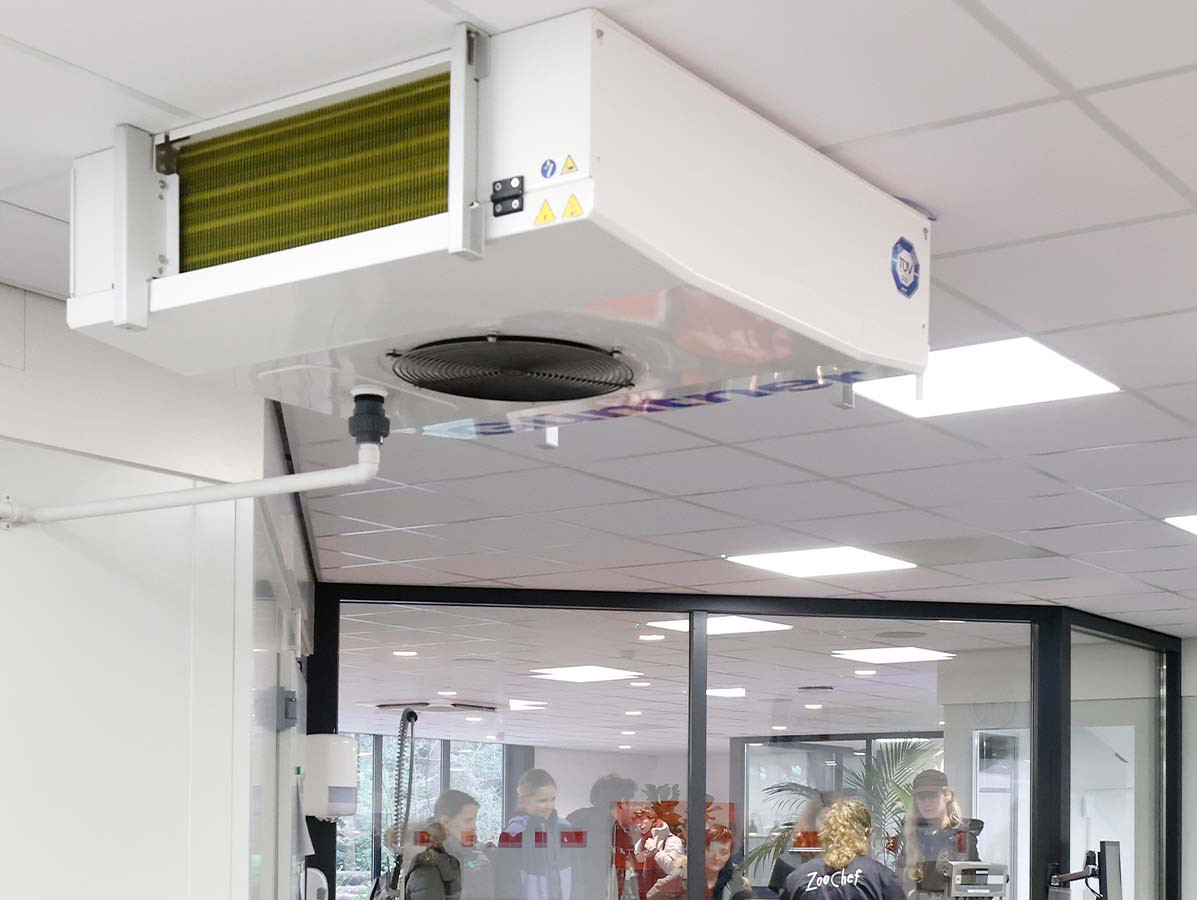
Anyone curious about what a baboon or a ring-tailed lemur's menu looks like can now visit the new Animal Kitchen at Amersfoort Zoo. During construction, they focused on transparency and sustainability.
400 apples, 130 kilograms of herring, 940 beets, and 7 kilograms of mealworms. These are just a few items on the weekly shopping list of the brand-new Animal Kitchen in Amersfoort Zoo. Here, daily meals are prepared for over 120 animal species in the park, ranging from spectacled bears to eagle-owls, from day geckos to sloths. “Each species has its own diet. Sometimes it even varies from animal to animal. We consider the natural needs of each species and tailor the menu to each individual animal,” explains Remco Sevink, Manager of Park Development & Maintenance. In the old setup, with multiple kitchens across the park, these personalized menus were more challenging to achieve. Remco adds, “Animal welfare was the main reason for the construction of the Animal Kitchen. But, of course, a central kitchen also brings significant efficiency benefits. For instance, it provides a better overview of the inputs and outputs, and the logistics are much more convenient.”

Another major advantage of building one large kitchen was transparency. Visitors can see directly into the kitchens and coolers through the windows from the spacious entrance hall. There's also a video explaining the operations in the Animal Kitchen, and visitors can read the menu's shopping lists. “Education is one of our major missions. We aim to teach a love for nature in our visitors. Throughout the park, they learn fun and interesting facts about the animals in various ways. On their way to the Animal Kitchen, they walk on the Food Path, where they can smell, feel, and discover what food the animals eat. In the kitchen, they can see through the glass how we sort vegetables and pellets, cut meat, and breed African migratory locusts that later serve as snacks for the nile monitors, spectacled bears, and baboons. Children often press their noses against the window as we work here. Sometimes they look away when large pieces of meat are involved. That's perfectly fine. We provide a realistic impression, but we're still exploring what to show up close,” Remco shares, as a group of students receives an explanation about the elephant's diet from a zookeeper behind him. For the caretakers, having visitors literally watching their every move was an adjustment. Remco comments, “In the past, everything happened behind the scenes. But this creates a very exciting dynamic.”

A prerequisite for a clear view of the kitchen and the coolers is, of course, that the windows do not fog up. “That was a bit nerve-wracking for me, but our supplier did an excellent job,” says Remco. The supplier in question is DI Koeltechniek. The company, which had been responsible for maintaining the park's coolers and freezers, was tasked with installing the cooling and freezing systems for the new kitchen. Jan Willem Mol, the director, describes it as an unusual project: “The location alone made this a special project. Besides, we were able to do the complete package: aside from the cooling and freezing systems, we also installed a climate system, an air circulation system, and a heat recovery system for the tap water – possibly for other uses later on. And no, we had never before installed coolers with so many windows.” A cross-flow heat exchanger is used for ventilation, transferring heat from the polluted indoor air with an efficiency of 80 – 90%. “That wasn't on our list initially, as it's a significant investment,” continues Remco “But because of energy savings, we chose in anyway. We also focused on minimizing energy loss in the routing of the coolers and freezers. For example, the freezer leads into the cooler.” Sustainability is a top priority for the park, he explains: “The new building has a green roof and an insect wall. We've also created a toad pond filled with excess rainwater.” He is pleased with the expertise of Jan-Willem and his team: “We communicate very well, perhaps because both DI Koeltechniek and Amersfoort Zoo are family businesses. There was a great connection between our staff and that of DI Koeltechniek. Moreover, they have short communication lines and skilled, communicative employees who are also extremely customer-focused.”
There's a high chance that Remco will approach DI Koeltechniek for future projects. There are plenty of plans. For example, the office above the Animal Kitchen still needs to be furnished, and a new chimpanzee enclosure is set to be built next spring. Because: “Just like nature, we are always evolving.”
www.dierenparkamersfoort.nl
www.di-koeltechniek.nl
Photos: ©Ton Kastermans Fotografie
Source: Vakblad Voedingsindustrie 2024